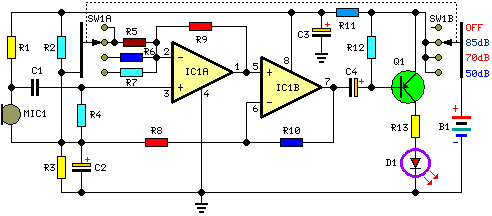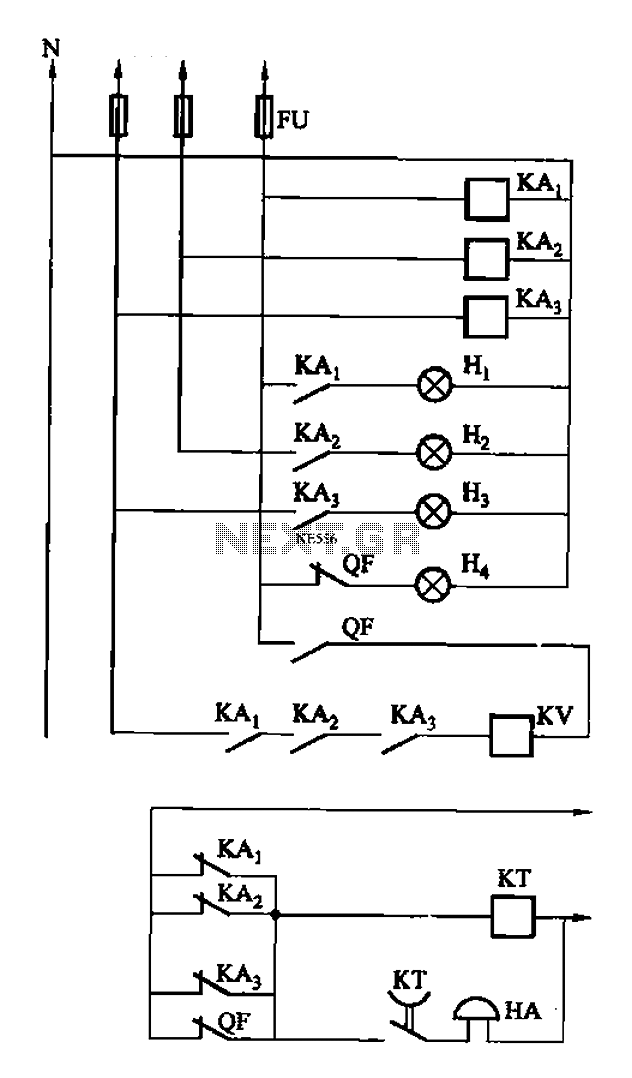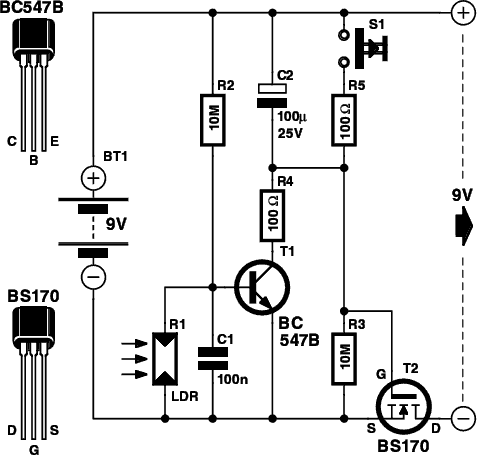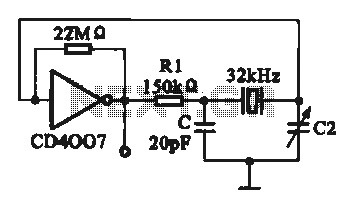
Room Noise Detector Circuit Schematic

This circuit is designed to indicate when room noise exceeds a predetermined threshold, utilizing a flashing LED to signal this condition. Three fixed noise levels are selectable: 50 dB, 70 dB, and 85 dB. The circuit employs two operational amplifiers to amplify the sound detected by a miniature electret microphone, which in turn drives the LED. The circuit can be powered on or off using a switch (SW1), with the first position turning the circuit off and the subsequent positions setting the input sensitivity threshold to 85 dB, 70 dB, and 50 dB, respectively. The circuit consumes 1 mA of current with the LED off and between 12 mA and 15 mA when the LED is continuously illuminated. The 50 dB threshold is particularly useful for monitoring noise levels in a bedroom during nighttime, as a steady or frequently flashing LED indicates that the ambient noise level is too high for restful sleep.
The circuit operates by first capturing sound through the electret microphone, which converts acoustic energy into an electrical signal. This signal is then fed into the two operational amplifiers configured for gain, enhancing the microphone's output to a level suitable for further processing. The gain settings are adjusted based on the selected threshold level, which is determined by the position of the switch SW1.
When the microphone detects sound levels above the selected threshold, the operational amplifiers output a signal that activates the LED. The LED's flashing behavior serves as a visual alert that the noise level has surpassed the set limit, allowing users to take appropriate action if needed. The circuit is designed to be energy-efficient, consuming minimal power when idle, while providing sufficient current to the LED when it is activated.
The choice of thresholds—50 dB, 70 dB, and 85 dB—addresses various environments and user needs. For example, the 50 dB setting is particularly beneficial for nighttime monitoring in bedrooms, where excessive noise can disrupt sleep. By providing a clear visual indication of noise levels, this circuit serves as a practical tool for maintaining a conducive sleeping environment.This circuit is intended to signal, through a flashing LED, the exceeding of a fixed threshold in room noise, chosen from three fixed levels, namely 50, 70 & 85 dB. Two Op-amps provide the necessary circuit gain for sounds picked-up by a miniature electret microphone to drive a LED.
With SW1 in the first position the circuit is off. Second, third and fourth positions power the circuit and set the input sensitivity threshold to 85, 70 & 50 dB respectively. Current drawing is 1mA with LED off and 12-15mA when the LED is steady on. The 50 dB setting is provided to monitor the noise in the bedroom at night. If the LED is steady on, or flashes bright often, then your bedroom is inadequate and too noisy for sleep.
🔗 External reference
The circuit operates by first capturing sound through the electret microphone, which converts acoustic energy into an electrical signal. This signal is then fed into the two operational amplifiers configured for gain, enhancing the microphone's output to a level suitable for further processing. The gain settings are adjusted based on the selected threshold level, which is determined by the position of the switch SW1.
When the microphone detects sound levels above the selected threshold, the operational amplifiers output a signal that activates the LED. The LED's flashing behavior serves as a visual alert that the noise level has surpassed the set limit, allowing users to take appropriate action if needed. The circuit is designed to be energy-efficient, consuming minimal power when idle, while providing sufficient current to the LED when it is activated.
The choice of thresholds—50 dB, 70 dB, and 85 dB—addresses various environments and user needs. For example, the 50 dB setting is particularly beneficial for nighttime monitoring in bedrooms, where excessive noise can disrupt sleep. By providing a clear visual indication of noise levels, this circuit serves as a practical tool for maintaining a conducive sleeping environment.This circuit is intended to signal, through a flashing LED, the exceeding of a fixed threshold in room noise, chosen from three fixed levels, namely 50, 70 & 85 dB. Two Op-amps provide the necessary circuit gain for sounds picked-up by a miniature electret microphone to drive a LED.
With SW1 in the first position the circuit is off. Second, third and fourth positions power the circuit and set the input sensitivity threshold to 85, 70 & 50 dB respectively. Current drawing is 1mA with LED off and 12-15mA when the LED is steady on. The 50 dB setting is provided to monitor the noise in the bedroom at night. If the LED is steady on, or flashes bright often, then your bedroom is inadequate and too noisy for sleep.
🔗 External reference





